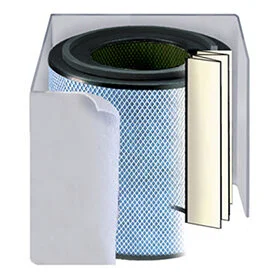Element Awair Air Monitor (includes shipping)
Element Awair Air Monitor (includes shipping)
Air quality monitoring that fits your lifestyle
Feel Safe at Home, Always
Worried your cleaning supplies are emitting too many chemicals or cooking with a gas stove or outside elements like smoke from wildfires?
Want to monitor your CO2 to make sure everyone doesn’t get headaches or too tired when working from home, doing homework or trying to get a good sleep? Super important for seniors and students and little ones.
Make sure your home’s humidity is under 50% so mold stays away
Element will let you know if your VOCs, Particulates, Humidity, and CO2 are high so you can turn up your air purifier or open windows.
If it’s higher then you can consult DesignWell Studios for testing and consulting on improving your indoor air quality.
Awair’s signature design of a fan and laser sensor has been tested and modified since Awair’s founding in 2013 to make it the leader in IAQ technology.
Read your sensor data directly on the device. Awair Element shows your air data in real time.
Access your air data from anywhere with the free Awair app!
The most accurate airflow design on the market!
Click here to check the Air Quality Levels Guide
What Chemicals (TVOCs) Does Awair Detect?
(shipping included)
Return Policy
If for some reason you think it isn't working properly we can send you a return label to have it tested by the manufacturer if it is within 30 days. If there is something faulty with the machine, the company will exchange it and send it back to you.
What Chemicals (TVOCs) Does Awair Element Detect?
What is a TVOC Baseline?
Why Monitor TVOC levels?
Awair Element’s TVOC sensor measures total VOC levels rather than individual chemicals. There are several reasons why VOCs are measured collectively rather than individually:
The EPA’s Technical Assistance Document for Sampling and Analysis of Ozone Precursors lists more than 90 target VOCs that have potentially negative health effects. Their Substance Registry Service lists over 230 potential VOCs. To measure each VOC individually, you’d need an individual sensor for each.
VOCs tend to co-occur. In other words, if a few of the VOCs in the above lists are present (related to a specific source), others are likely to be there as well. Ventilation or removal of the chemical pollution source will generally help reduce all VOCs that are present.
VOCs have a cumulative effect on health and comfort. In other words, the more VOCs that are present, the greater the risk to your health. For example, numerous VOCs are asphyxiants. Asphyxiants displace oxygen in the blood. If a person breathes in multiple asphyxiants, each one is working to displace oxygen in the blood and the effects will be compounded.
What are common sources of VOCs?
List of VOCs
Because VOCs occur as a group, measuring and reporting each chemical individually is impractical. Measuring them as a group is simpler and far more effective. Another way to look at VOCs is by category, as shown below.
Some example chemicals (although not exhaustive):
Acetone
Formaldehyde
Acetic Acid
Toluene
m- & p-Xylenes
n-Undecane
n-Dodecane
Nonanal
n-Decane
o-Xylene
d-Limonene
Benzene
1,1,1-Trichloroethane
Hexanal
Carbon monoxide
Ethanol
Ethanal
Isoprene
Methanol
Isopropanol
Ethylbenzene
1,2,4-Trimethylbenzene
Tetrachloroethene
Phenol
Ethyl acetate
2-Butanone
Styrene
TXIB
4-Ethyltoluene
2-Butoxyethanol
2-Ethyl-1-hexanol
Nonane
Octane
Butyl acetate
n-Hexane
Pentanal
1,3,5-Trimethylbenzene
a-Pinene
Texanol 1&3
4-Methyl-2-pentanone
Naphthalene
1-Butanol
1,4-Dichlorobenzene
3-Methylpentane
Trichloroethylene
Methylene chloride
Trichlorofluoromethane
t-Butyl methyl ether
Trichloro-trifluoroethane
Chloroform
Carbon tetrachloride
4-Phenylcyclohexene
Carbon disulfide
Chlorobenzene
1,2,4-Trichlorobenzene
1,2-Dichlorobenzene
+ additional chemicals comprised of H, C, and O











